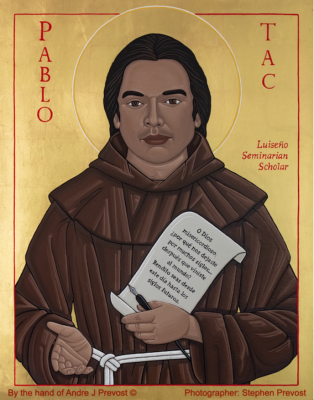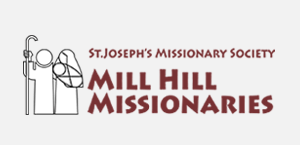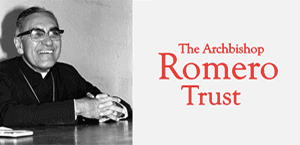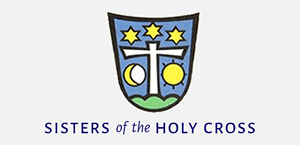Rediscovering Pablo Tac: 19th century native American scholar

Icon of Pablo Tac by Andre Prevost
The remarkable story of Pablo Tac, a 19th-century native Californian seminarian and scholar, is reaching more people than ever. Native American Heritage Month offers an ideal opportunity to discoverthis extraordinary figure.
Christian Clifford, veteran Catholic school educator, has been on a quest to set the record straight when it comes to the founder of the California missions, Saint Junípero Serra. Canonised by Pope Francis in September 2015, Serra made headlines for many months leading up to the canonisation. Some painted him in a disparaging light and Clifford knew that the historical record proved otherwise.
Clifford shared about his own circuitous journey in getting to know Pablo Tac. "Early in my research of Saint Junípero Serra, first to learn if there was something to what his detractors said and eventually to write two books about him, I accidentally came across the story of Pablo Tac and was deeply moved. Surprisingly, outside of academia, very little has been written about him. Tac's story has the power to move hearts and minds. It shocked me that those who malign Serra's reputation never bring up Pablo Tac. To me, it was Serra's vision that impacted the amazing life of Pablo Tac. In other words, you would not have one without the other."
Pablo Tac was Luiseño Indian. He was born and raised at Mission San Luis Rey de Francia, located in present-day Oceanside, California. At the age of ten, he left the Mission for Rome with Fr Antonio Peyrí and another Luiseño boy, Agapito Amamix. On September 23, 1834, Pablo and Agapito enrolled at the Collegium Urbanum (now Pontifical Urbaniana University), where they studied for the priesthood.
Clifford, author of the only biography about Pablo Tac, hopes that bringing attention to Pablo Tac will lead to more research.
Pablo Tac's writings are believed to be the earliest from a California Indian. While Pablo studied in Rome, he wrote a description of life as a mission Indian ('Conversion of the San Luiseños of Alta California' c. 1835), gave a public recitation of a poem at the Polyglot Academy (c. January 1836), in Sequoyahesque fashion , created a dictionary of the language of his people ('Prima Linguae Californiensis Rudimenta a P Tak proposita"' c. February 1838), and wrote an account of the native peoples in Southern California ('De Californiensibus', c. after 1838). Sadly he died in 1841, before he was ordained.
Clifford, who was born in California, was amazed that while growing up he never learned about Pablo Tac. While conducting research for his biography on Pablo Tac, he found that the young scholar was nearly forgotten. Therefore, he was overjoyed when he met Catholic Luiseños in July 2019 at the Tekakwitha Conference in Sharonville, Ohio who are aware of Pablo and follow in his footsteps. Pablo also seems to be getting some overdue recognition.
In Oceanside, a hall at Mission San Luis Rey was named after Pablo and a public elementary school took his name. Andre Prevost, a Canadian iconographer, has written an icon of Pablo Tac for the chapel at St Thomas Aquinas High School in North Vancouver, BC . (pictured) . Over 600 Catholics and people of good will have already signed the petition to nominate Pablo Tac for the cause of canonization (an electronic version of the petition can be found here.
The campaign has received support from descendants of Mission Indians.
Clifford said Pablo Tac is "a great role model of devotion, perseverance, and accomplishment. Memorials, books, and devotion to Saint Junípero Serra abound in Spain, Mexico, and the United States. It is time that the story of Pablo Tac, too, reaches hearts and minds, far and wide. He is a great example of a spiritual warrior."
Clifford drew inspiration from both Saint Junípero Serra and Pablo Tac when he walked the 800-mile California Missions Trail.
For more information about Pablo Tac, visit: www.missions1769.com/2022/07/10/luiseno-pablo-tac-resources/.


















